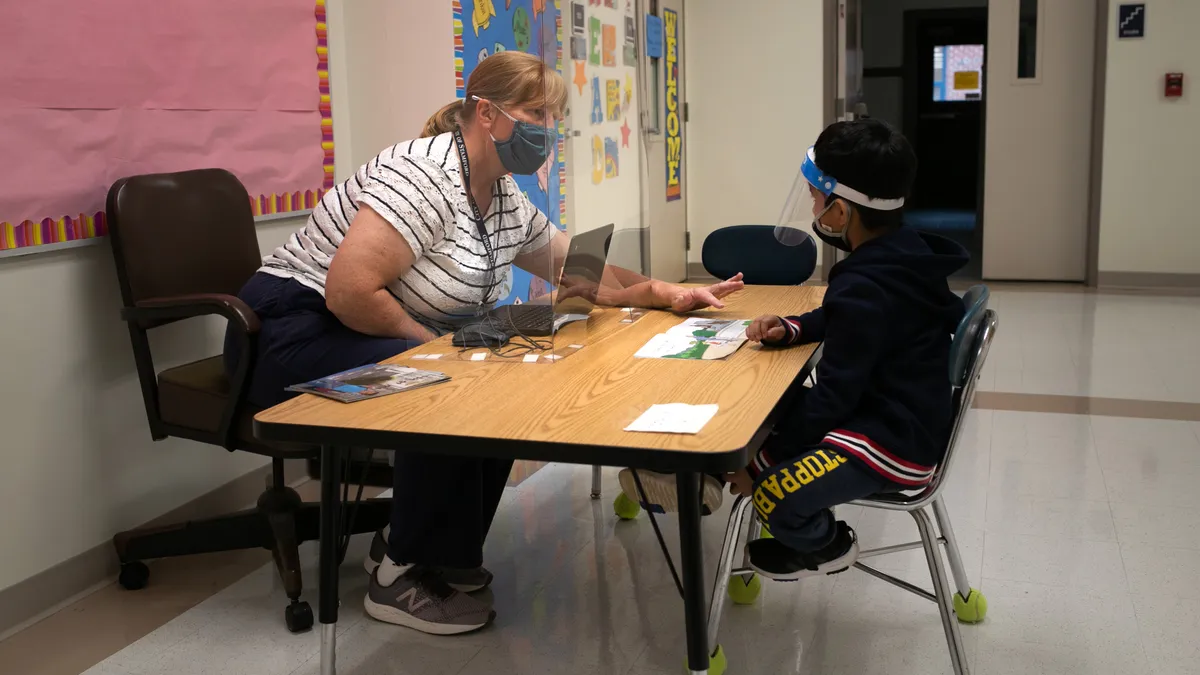Lauren Morando Rhim is executive director and co-founder of the Center for Learner Equity.
Twenty months into the pandemic, we are plagued by more questions than answers regarding its impact on students’ experiences and academic performance. While data continues to be collected in real-time, historical trends provide a baseline to help us understand and, ideally, develop strategies to address problematic shifts triggered by the pandemic.
Every two years, the U.S. Department of Education's Office for Civil Rights collects key indicators of our progress upholding the civil rights of students enrolled in traditional public schools and charter schools in its Civil Rights Data Collection.
The CRDC is essential to understanding students’ experiences and is especially important to the ongoing examination of the role of charter schools in the broader public education landscape. This week, the Center for Learner Equity conducted the fourth in a series of secondary analyses of the CRDC to track the degree to which students with disabilities are enrolling in charter schools and their experiences relative to traditional public schools.
The data provides an important foundation to understand how the pandemic is changing schools and the experiences of students with disabilities.
Based on our analysis, on average, the number and proportion of students qualifying for special education and related services continues to increase. Student absences associated with COVID-19 may limit teachers’ ability to identify and refer students to special education, which could precipitate a decrease in the near term. Conversely, the disruptions and trauma associated with the pandemic are contributing to students falling behind or encountering new barriers to their development, which could trigger a spike in referrals to special education.
After a few years of incrementally increasing the proportion of students with disabilities, charter schools saw a slight decrease in 2017-18 and continue on average to enroll a smaller proportion of students with disabilities, thereby leading to an increase in the gap between the two sectors (10.7% versus 13.2%). As charters continue to face political resistance, failure to enroll a proportionate share of students with disabilities reinforces the anti-charter narrative related to selective enrollment.
The legal status of a charter school appears to influence the extent to which students with disabilities are accessing charter schools, most likely due to the Individuals with Disabilities Education Act assigning responsibility for the provision of a free appropriate public education to districts, not schools. This assignment can lead to districts and charters referring students with disabilities to existing district schools rather than supporting enrollment in charter schools that would need to build expertise.
Comparatively, charter schools educate more students with disabilities in general education classrooms, but traditional public schools continue to educate more students with disabilities who are typically educated in more restrictive settings.
In both charter and traditional public schools, students with disabilities are subject to two to three times more discipline (i.e., suspensions, seclusion and restraint), and this discipline leads to more involvement with law enforcement. Given mounting concerns about the impact disruptions associated with the pandemic will have on students’ behavior, states and districts should anticipate the growing need for behavioral support and attention to students’ social and emotional learning as a precursor to accelerating learning in all schools.
Finally, the sub-sample of “specialized” charter schools — that is, schools primarily or solely focused on educating students with disabilities — continues to grow and remains largely clustered in Florida, Ohio and Texas. Our review of specialized schools’ websites confirmed the schools are responding to parental demand, but nonetheless raise concerns about the least-restrictive environment and the adequacy of authorizers' accountability systems.
As the nation continues to manage the pandemic and schools take incremental steps toward recovery, leveraging data to understand the experiences of students is more important than ever. Given documented shifts in enrollment, and specifically the increased enrollment in charter schools, it is essential that policymakers, charter school authorizers, and schools themselves examine enrollment and service provision trends and make adjustments as necessary to safeguard against further marginalizing students with disabilities.





 Dive Awards
Dive Awards













